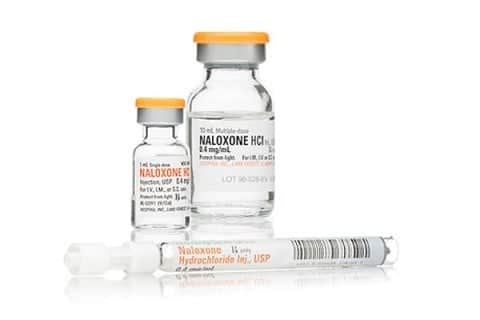
 Health Canada has issued a statement proposing a change to make the drug naloxone more widely available. Naloxone is widely known as the antidote to opiod overdose, used to reverse the effects of drugs such as heroin and fentanyl.
Health Canada has issued a statement proposing a change to make the drug naloxone more widely available. Naloxone is widely known as the antidote to opiod overdose, used to reverse the effects of drugs such as heroin and fentanyl.
Currently, naloxone and naloxone kits are available by prescription and are commonly used by health agencies, community groups and first responders across the country.
But the growing problem of fentanyl abuse has caused many health care advocates to push for greater access to naloxone.
“Health Canada’s goal in considering whether to change the prescription status of any drug is to determine whether it can be used safely outside the direct supervision of a health-care practitioner,” reads the statement.
In the name of expediency, the department plans to waive the standard six-month implementation period and will be engaging in public consultation on the issue until March 19th.
Naloxone has long been used to combat drug overdose. First approved by the US Food and Drug Administration in 1971, it is also on the World Health Organization’s List of Essential Medications.
But over the past few years, naloxone has become increasingly valuable to health care professionals as the use and abuse of opiods – both in prescription and street form – has skyrocketed.
Fentanyl has become particularly deadly. According to the Canadian Centre on Substance Abuse, between 2009 and 2014 there were at least 655 deaths in Canada in which fentanyl was either the cause or a contributing cause. The misuse of the drug is occurring both through diversion of prescribed fentanyl as well as through illicit production of the drug. Fentanyl is known to be up to 100 more powerful than other opiods.
The move to broaden access to naloxone is being praised by health advocates. David Saunders is staff physician at Halifax’s Direction 180, a methadone clinic. In an interview with the CBC, Dr. Saunders says, “Families are excited about the possibility that they might have something in their home that might contribute a little bit to being able to help their loved one. Over the last three or four years there have been multiple cases of people who have died at home or close to home with family members. Other than calling 911 and trying to access help, [they] have their hands tied. There’s nothing they can do.”
Fentanyl abuse has been on the rise due to the tightening of availability of oxycodone and other prescription opiods, which themselves became endemic over the past two decades, purportedly in response to calls by interest groups to give doctors more weapons to treat and manage patients’ pain. In 1999, for example, the US Veterans Health Administration campaigned around the slogan that pain should be adopted as the “fifth vital sign”, requiring that doctors assess pain during every consultation, paving the way for prescription – and overprescription – of opiods by general practitioners.
Naloxone is available to be administered by injection, but recently health providers have been pushing for the availability naloxone as a nasal spray.
Leave a Reply
You must be logged in to post a comment.




 Share
Share Tweet
Tweet Share
Share




Comment